#laravel request lifecycle
Explore tagged Tumblr posts
Text
Laravel Programming: A Comprehensive Guide
Table of Contents
Introduction to Laravel
Why Use Laravel?
Installing Laravel
Laravel Folder Structure
Routing and Controllers
Blade Templating Engine
Laravel Models and Eloquent ORM
Migrations and Database Seeding
Request Lifecycle and Middleware
Form Handling and Validation
Authentication and Authorization
Laravel Artisan CLI
RESTful API Development in Laravel
Testing in Laravel
Deployment and Performance Optimization
Laravel Ecosystem and Tools
Conclusion
1. Introduction to Laravel
Laravel is an open-source PHP framework built by Taylor Otwell. It follows the MVC (Model-View-Controller) architectural pattern, which promotes a clean separation between business logic, UI, and data.
Laravel aims to make development faster and easier by providing powerful tools such as:
Routing
Middleware
Authentication
Blade templating
ORM (Eloquent)
Queues
Artisan command-line tool
Laravel is currently one of the most popular PHP frameworks and powers thousands of web applications globally.
2. Why Use Laravel?
Benefits of Laravel:
Clean and Elegant Syntax: Laravel simplifies complex tasks.
MVC Architecture: Ensures separation of concerns.
Eloquent ORM: Elegant database abstraction layer.
Blade Templating: Lightweight yet powerful templating engine.
Built-in Authentication & Authorization: Secure and easy to implement.
Community and Ecosystem: Laravel has a rich ecosystem like Nova, Horizon, Forge, Envoyer, etc.
Testing Ready: PHPUnit integration for test-driven development (TDD).
0 notes
Text
Ultimate Guide to eCommerce Website Development in 2025: Features, Tech Stack & Best Practices

The world of online shopping is evolving rapidly. In 2025, having a high-performing, customer-centric eCommerce website isn’t just a bonus — it’s a necessity. Whether you’re launching a new online store or upgrading an existing one, working with an expert eCommerce website development company can set you up for long-term success.
This guide shares everything you need to know — from essential features to the right tech stack — and why choosing the best eCommerce website development company can make all the difference.
💡 What is eCommerce Website Development?
eCommerce website development is the process of building a robust online store where products or services can be searched, filtered, and purchased seamlessly. Whether you’re in fashion, electronics, or even looking into jewellery website development, the development process includes:
Front-end design and UX
Back-end logic, inventory, and checkout
Payment gateway integration
Third-party APIs (shipping, CRM, ERP)
If you’re planning a niche-specific platform like jewellery website development, features like dynamic gold rate integration, virtual try-ons, and private pricing catalogs are often critical.
🔑 Key Features of a Successful eCommerce Website
To stand out in 2025, your eCommerce site — whether general or niche like jewellery website development — must offer:
1. Dynamic Product Catalog
Real-time inventory updates
Bulk uploads & categorization
Private/public segmentation for B2B/B2C
2. Mobile-First Responsive Design
With mobile commerce dominating, the best eCommerce website development company always prioritizes responsive, mobile-friendly design.
3. Advanced Filtering & Search
Sort by material, price, availability, brand
For jewellery sites, add filters like purity (22K/18K), stone type, and weight
4. Personalized User Experience
AI-based product recommendations
Customer-specific pricing (vital for B2B and luxury niches like jewelry)
5. Secure Checkout & Payments
Top eCommerce website development companies ensure secure payment integration with UPI, cards, wallets, and buy-now-pay-later options.
6. ERP & CRM Integration
Real-time stock sync
Order & customer lifecycle tracking
Essential for high-volume sellers or complex inventory like in jewellery website development
7. WhatsApp & SMS Notifications
Order confirmation, shipping alerts, new arrivals
A feature many clients request when working with a jewellery website development expert
8. Loyalty & Rewards
Ideal for increasing repeat purchases
Works well across industries including jewellery
⚙️ Tech Stack: What Should You Use?
Choosing the right tech stack is one of the most critical steps in eCommerce website development. A professional eCommerce website development company will evaluate your business model, expected traffic, product complexity, and growth plans to recommend the best technologies. For the frontend, modern frameworks like React.js or Next.js paired with Tailwind CSS ensure fast, responsive, and mobile-first design. On the backend, scalable and secure platforms like Node.js, Laravel, or Django are often used to handle dynamic business logic and database operations. When it comes to managing content, headless CMS options such as Strapi or Sanity allow for flexible and fast content delivery. Databases like PostgreSQL or MongoDB are chosen based on the need for relational or NoSQL data structures. Hosting is typically managed through platforms like Vercel, AWS, or DigitalOcean to ensure speed and uptime. For payment processing, secure integrations with Razorpay, Stripe, or PayPal are a must. Finally, tools like Google Analytics 4 and Hotjar are used for monitoring user behavior and optimizing performance. When building niche-specific platforms — such as those involving jewellery website development — your development partner must be able to integrate features like real-time metal pricing, visual try-ons, and private catalogs. The best eCommerce website development company will always tailor the tech stack to meet these unique needs while keeping the platform scalable and secure.
🎯 Best Practices for eCommerce Success
Here’s what leading eCommerce website development companies recommend for optimal performance:
Design for trust with SSL and security badges
Optimize load times (<2 seconds)
Use rich media (images, 360° views, videos)
Simplify checkout with guest access and minimal steps
Implement structured data for better search visibility
Use retargeting tools to reduce abandoned carts
For example, if you’re managing a jewellery website, trust, product clarity, and fast performance are non-negotiable.
💰 Cost & Timeline Estimates
The cost and timeline for developing an eCommerce website can vary significantly depending on the size, features, and complexity of the project. A basic eCommerce website, with essential product listings and checkout functionality, can typically cost between $2,000 to $5,000 and be completed within 2 to 4 weeks. Mid-range stores with more advanced features like ERP integration, custom filters, loyalty programs, and responsive design may cost between $5,000 and $15,000, requiring around 1 to 2 months of development time. If you’re planning to build a high-end or specialized platform — such as a jewellery website development project featuring dynamic gold rates, product personalization, and WhatsApp notifications — the investment may range from $15,000 to $50,000 or more, and the timeline could stretch from 3 to 6 months, depending on complexity. Choosing the best eCommerce website development company ensures that you’re not only getting a cost-effective solution but also one that delivers long-term value through performance, scalability, and ongoing support. Keep in mind that maintenance, security, and marketing costs post-launch are also vital to factor into your overall budget.
🚀 Final Tips to Launch with Impact
Partner with the right eCommerce website development company that understands your industry
Conduct rigorous testing on mobile, desktop, and across browsers
Plan a strong launch strategy — SEO, email marketing, and influencer tie-ins
Iterate continuously based on real customer behavior and heatmaps
✅ Conclusion
Whether you’re building a general retail store or a niche-specific platform like a jewellery website, the success of your eCommerce journey depends on strong foundations — technology, design, and functionality. Choosing the best eCommerce website development company ensures your site is not only beautiful but also fast, secure, and conversion-optimized.
Looking to start your eCommerce journey the right way? Partner with a trusted eCommerce website development company that understands your vision, your customers, and your growth potential.
0 notes
Text
10 Reasons to Hire Laravel Developers for Your Next Project

When initiating a novel project, the selection of an appropriate technology stack and development team is of utmost importance in order to achieve success. Laravel, a widely-used PHP framework, provides a variety of features that can greatly improve the efficiency and performance of your project. In this article, we will examine ten persuasive reasons to hire Laravel developers for your upcoming project and the impact they can have.
1. Highly Resilient and Easily Expandable Architecture
Laravel is widely recognized for its strong architectural design and ability to handle large-scale applications. By employing Laravel developers, you acquire the opportunity to utilize a software framework specifically designed to effectively manage extensive applications. Whether you are engaged in the development of a sophisticated enterprise solution or a website with high traffic, Laravel's scalability guarantees that your project can expand smoothly without any compromise on performance.
2. Streamlined Development Methodology
Laravel developers possess expertise in utilizing the framework's functionalities to optimize the development workflow. By engaging the services of a specialized Laravel developer, you can leverage their proficiency in utilizing Laravel's pre-existing tools and libraries, resulting in a notable reduction in development time. This efficiency translates to a reduced time required to bring a product to market and a development process that is more adaptable and responsive.
3. Implementation of Advanced Security Measures
Security is a paramount concern in the field of web development, and Laravel demonstrates exceptional performance in this domain. By employing Laravel programmers, you can leverage the benefits of Laravel's extensive security functionalities, including safeguarding against SQL injection, cross-site request forgery (CSRF), and cross-site scripting (XSS). The inclusion of these inherent security measures serves to protect your application from possible vulnerabilities.
4. Efficient and Well-Structured Code
Laravel is renowned for its elegant syntax and well-organized code structure. Laravel developers leverage these features to write code that is not only easily comprehensible but also easily maintainable. The implementation of a clean code structure improves the ability for collaboration and facilitates future updates or modifications, thereby ensuring the long-term manageability of your project.
5. Configurable and Adaptable
One of the primary advantages of employing a Laravel developer is their proficiency in tailoring and modifying the framework to suit the precise requirements of your project. Laravel's extensibility enables developers to develop customized solutions that closely align with your business requirements, providing a significant level of control over the end product.
6. Robust Community Support
Laravel features a dynamic and engaged community, serving as a valuable asset for developers and businesses alike. When you engage the services of dedicated Laravel developers, they leverage the Laravel community to obtain assistance, stay updated with the latest developments, and adhere to industry best practices. The presence of an engaged community guarantees that your project will be able to leverage the most recent advancements and innovations within the Laravel ecosystem.
7. Integration Testing Capabilities
Software testing is a crucial aspect of the software development lifecycle, and Laravel offers built-in testing features to guarantee the reliability and performance of your application. Laravel developers utilize the built-in testing tools to detect and resolve bugs, thereby ensuring the stability and dependability of the product. This emphasis on quality assurance contributes to the delivery of a more seamless user experience.
8. Efficient Database Management
Laravel streamlines database management through its Eloquent ORM (Object-Relational Mapping). When engaging the services of Laravel developers, they possess the expertise to effectively manage intricate database operations and relationships through the utilization of Eloquent. This optimized database management system decreases the time required for development and improves the overall performance of the application.
9. Incorporated Authentication and Authorization
Authentication and authorization are essential elements of web applications. Laravel incorporates pre-existing solutions for the management of user authentication and authorization. By employing Laravel developers, you guarantee the seamless integration of these features into your application, thereby ensuring a secure and user-friendly experience.
10. Long-Term Maintainability
Investing in Laravel development provides long-term advantages because of its high level of maintainability. Laravel's structured architecture and modular design facilitate the maintenance and updating of the application for developers. By employing a Laravel developer, you establish the foundation for a project that is more manageable and scalable in the long run, guaranteeing long-term success and flexibility.
Summary
Employing Laravel developers for your upcoming project offers a multitude of benefits that can greatly improve your development workflow and end result. Laravel provides a comprehensive solution for modern web development needs, with robust security features, efficient development processes, flexible customization options, and long-term maintainability. By opting to hire laravel developers, you make an investment in a framework that facilitates the growth and success of your project.
If you are prepared to advance your project to a higher stage, it is advisable to collaborate with proficient Laravel developers in order to exploit the complete capabilities of this robust framework.
0 notes
Text
Key Advantages of Using a Web Development Framework

In today’s fast digital world, the development of websites and web applications needs to be both efficient and scalable. This is where web development frameworks come into play, offering a structured environment that speeds up the development process while reducing the amount of repetitive coding developers must do. Here are some of the core benefits of using a Web development framework:
1. Efficiency in Coding: Web development frameworks come pre-loaded with a toolbox of components that can be reused for various functions across different projects. This means developers don’t need to write code from scratch every time, leading to faster development cycles. Frameworks like Ruby on Rails, Django, and Laravel, for instance, follow the principle of "convention over configuration," simplifying the coding process further.
2. Enhanced Security: Security is a major concern in web development, and frameworks provide a solid foundation by incorporating built-in security features. These might include protection against common threats such as SQL injection, cross-site scripting (XSS), and cross-site request forgery (CSRF). The community support behind these frameworks also ensures regular updates and patches to safeguard against new vulnerabilities.
3. Support for MVC Architecture: Most modern web development frameworks adhere to the Model-View-Controller (MVC) architecture, which separates the data model with business rules from the user interface. This separation helps in managing complex applications, as it allows multiple Web developers to work on the model, controller, and view separately without interfering with each other’s work.
4. Community Support and Resources: One of the biggest advantages of using popular frameworks is the extensive community support they provide. Whether it’s troubleshooting, seeking advice, or sharing expertise, there’s always a community to turn to. Additionally, abundant resources such as plugins and modules can significantly extend the functionality of your web applications without the need to develop these features from scratch.
5. Scalability: With the inherent structure and tools provided by frameworks, scaling up web applications becomes much easier. Frameworks are designed to accommodate growth, handling more requests per second and allowing for further development as user numbers grow.
6. Enhanced Team Collaboration: Web development frameworks enforce best practices and coding standards, ensuring that all developers on a team are working in sync. This is particularly beneficial for larger teams or projects where consistent coding is crucial.
7. Faster Time-to-Market: By speeding up the development process and simplifying various stages of the lifecycle of web application development, frameworks significantly reduce time-to-market.
Umano Logic: Effective Web Development for Today's Businesses
Umano Logic specializes in web development, creating powerful, feature-packed, and innovative websites. As a top web development company, you can hire professional full-time developers who will work as if they're part of your own team. Our websites are easy to use, fully functional, secure, and built to grow with your business. We focus on key features to ensure our websites meet current needs and are ready for future changes.
In conclusion, A Web Development Framework offers numerous benefits, such as improved security, increased efficiency, enhanced scalability, and strong community support. These advantages make frameworks essential tools for developers, including those at Umano Logic, who strive to streamline their web development processes and create robust, high-performance web applications.
#Web development company in Edmonton#dedicated web developers in CA#web development#Web app development Service#software development Canada
0 notes
Text
Elevating Web Development with a Leading Laravel Development Company in the USA
In the dynamic landscape of Laravel website development, choosing the right framework is paramount to ensuring the success and efficiency of your projects. One such powerhouse in the realm of PHP frameworks is Laravel. Renowned for its elegant syntax, developer-friendly tools, and robust features, Laravel has become the go-to choice for web developers worldwide.
Understanding Laravel's Allure
In this blog post, we will explore the merits of Laravel and shine a spotlight on a top-tier Laravel Development Company in the USA that is revolutionizing web development.
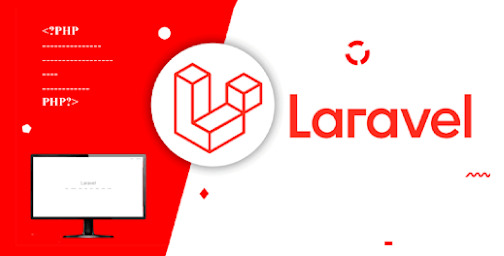
1. Elegant Syntax and Readability:
Laravel stands out with its clean and expressive syntax, making code not only functional but also a joy to read. This readability is crucial for collaborative projects, ensuring that developers can easily understand and contribute to the codebase.
2. Blade Templating Engine:
Laravel incorporates the Blade templating engine, offering a simple yet powerful templating system. Blade templates facilitate the creation of dynamic content, enabling developers to seamlessly integrate logic into their views.
3. Artisan Console:
Laravel comes equipped with Artisan, a powerful command-line tool that automates various tasks, from database migrations to generating boilerplate code. This feature enhances developer productivity by eliminating repetitive manual tasks.
4. Eloquent ORM:
Eloquent, Laravel's Object-Relational Mapping (ORM) system, simplifies database interactions. With an expressive syntax, developers can interact with databases using PHP rather than SQL, streamlining the data manipulation process.
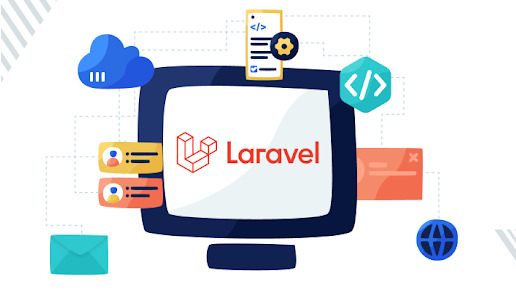
5. Middleware for HTTP Requests:
Laravel's middleware enables developers to filter HTTP requests entering their application. This functionality allows for the creation of custom middleware, enhancing security and controlling access to certain features.
6. Robust Authentication and Authorization:
Laravel provides a comprehensive authentication system out of the box. This system simplifies the implementation of secure user authentication, including features like user registration, password reset, and role-based access control.
Laravel Development Company in the USA: Pioneering Excellence
In the competitive landscape of web development services, one company stands out as a trailblazer in Laravel website development – Iwebnext. With a solid reputation for delivering cutting-edge solutions, Iwebnext has become a trusted partner for businesses seeking top-notch web applications.
1. Expertise and Experience:
Iwebnext boasts a team of highly skilled Laravel developers with years of hands-on experience. Their expertise extends across a spectrum of industries, allowing them to tailor solutions that meet the unique needs of clients.
2. Customized Solutions:
Understanding that one size does not fit all, Iwebnext prides itself on delivering bespoke Laravel solutions. Whether it's e-commerce platforms, content management systems, or enterprise-level applications, they have the proficiency to craft tailored solutions that align with client objectives.
3. Agile Development Approach:
Embracing an agile development methodology, Iwebnext ensures flexibility and adaptability throughout the project lifecycle. This approach facilitates regular client feedback, quick iterations, and the ability to respond swiftly to changing requirements.
4. Scalability and Performance Optimization:
Iwebnext recognizes the importance of scalability in today's rapidly evolving digital landscape. Their Laravel solutions are not only feature-rich but also optimized for performance, ensuring a seamless user experience even as the application scales.
5. Transparent Communication and Project Management:
Open and transparent communication is at the core of Iwebnext's values. Clients are kept informed at every stage of the development process, and the use of robust project management tools ensures timely deliveries without compromising quality.
Conclusion: Elevate Your Web Development with Laravel
In conclusion, Laravel continues to redefine the standards of PHP web development, offering a perfect blend of elegance, functionality, and efficiency. Providing unparalleled services with Laravel development company in USA, Iwebnext stands as a beacon of excellence, ready to transform ideas into reality. Harness the power of Laravel and partner with a company that not only understands the framework inside out but is also dedicated to delivering exceptional results. Your journey to web development excellence begins with the right framework and the right partners – choose Laravel, choose Iwebnext.
#Laravel Website Development#Laravel Development#Website Development Company#Best Website Development Company
0 notes
Text
Building Scalable Web Solutions: The Role of Laravel App Development Firms
In today's digital age, creating a robust and scalable web solution is vital for businesses to thrive. One of the most popular PHP frameworks, Laravel, has gained immense recognition for its ability to develop efficient and scalable web applications. When it comes to harnessing the full potential of Laravel, partnering with a top-tier Laravel app development company like Wama Technology can make all the difference.
The Rise of Laravel in Web Development
Laravel has quickly risen to prominence in the world of web development due to its elegant syntax, powerful features, and the community's strong support. This open-source PHP framework provides developers with a solid foundation to build high-performance web applications, making it an ideal choice for businesses looking to scale their online presence.
The Role of Laravel in Scalability
Scalability is a critical aspect of web development. As your business grows, your web application should seamlessly adapt to handle increased traffic, data, and user interactions. Laravel excels in this regard, offering several features that contribute to building scalable web solutions:
1. Blade Templating Engine:
Laravel's Blade templating engine simplifies the process of designing beautiful and responsive user interfaces. It allows developers to create reusable templates and components, streamlining the development process and making it easier to maintain and scale the application's frontend.
2. Eloquent ORM (Object-Relational Mapping):
Eloquent ORM simplifies database interactions by enabling developers to work with databases using object-oriented syntax. This not only improves code readability but also makes it easier to scale the application by managing database changes efficiently.
3. Caching and Optimization:
Laravel offers built-in support for various caching mechanisms, including Redis and Memcached. These tools enhance the performance of web applications by reducing server load and response times, ensuring a smooth user experience even during high traffic periods.
4. Queues and Job Processing:
To ensure scalability, Laravel provides a robust queue system for handling time-consuming tasks asynchronously. This enables applications to process tasks in the background, freeing up resources to handle more requests and maintain optimal performance.
Why Choose Wama Technology as Your Laravel App Development Partner?
Wama Technology, recognized as one of the best mobile app development companies in the USA, brings a wealth of experience and expertise to the table when it comes to Laravel development. Here's how partnering with Wama can benefit your business:
1. Expertise in Laravel:
Our team of skilled developers is well-versed in Laravel and its ecosystem. We understand the framework's nuances, enabling us to harness its full potential to build scalable and high-performing web solutions.
2. Customized Solutions:
We don't believe in one-size-fits-all solutions. Wama Technology takes a client-centric approach, tailoring Laravel web applications to meet your unique business requirements and goals.
3. Proven Track Record:
Our portfolio showcases a wide range of successful Laravel projects for clients across diverse industries. We have a proven track record of delivering top-notch solutions that drive business growth.
4. End-to-End Services:
From initial concept to deployment and ongoing maintenance, Wama Technology offers comprehensive Laravel development services. We are your trusted partner throughout the entire development lifecycle.
In conclusion, the role of Laravel app development firms like Wama Technology is pivotal in building scalable web solutions that can grow alongside your business. Laravel's powerful features combined with the expertise of a top Laravel development company ensure that your web application can handle increased traffic, maintain excellent performance, and provide an exceptional user experience. If you're looking to take your online presence to the next level, consider partnering with Wama Technology to unlock the full potential of Laravel.
0 notes
Text
Understanding Service Providers in Laravel: A Crucial Role in Application Bootstrapping

Introduction
Laravel Development Company India, an open-source PHP framework, has gained immense popularity due to its elegant syntax and powerful features for building web applications. One of the key components that make Laravel flexible and extensible is its Service Providers. In this blog post, we will delve into the world of Laravel Service Providers, their significance, and how they play a crucial role in the application's bootstrapping process.
What are Service Providers in Laravel?
In Laravel, Service Providers are essential components that allow developers to register services into the application's service container, which in turn enables dependency injection and facilitates the efficient management of dependencies throughout the application. Service Providers play a pivotal role in binding interfaces to concrete implementations, making it easier to manage application services and third-party libraries.
Role and Significance of Service Providers
Service Registration:
Service Providers are responsible for registering various services into the Laravel application. During the application bootstrapping process, Laravel loads all the registered service providers to make the required services available throughout the application's lifecycle. This registration step sets the foundation for using the application's features and functionalities seamlessly.
Dependency Injection:
Dependency Injection (DI) is a core principle in Laravel and plays a significant role in making the application more maintainable and testable. Service Providers enable DI by associating an interface with a specific implementation class. When a service is requested from the container, Laravel resolves the appropriate implementation, allowing developers to easily switch and test different implementations without altering the existing codebase.
Facades and Aliases:
Service Providers also facilitate the use of Facades in Laravel Development Agency India. Facades provide a convenient way to access services from the container without the need to explicitly resolve them each time. The Service Providers register these Facades, enabling developers to use expressive and readable syntax to interact with complex functionalities in the application.
Configuration Binding:
Laravel's configuration system is powerful and flexible. Service Providers are instrumental in binding configuration files to the application, allowing developers to access configuration values easily through the configuration facade or by injecting the configuration directly into classes.
Third-Party Integrations:
Many Laravel applications use third-party packages to enhance functionality. Service Providers offer an elegant way to integrate these packages into the application. Package authors can create Service Providers that handle the necessary bindings and configurations, simplifying the integration process for end-users.
Deferred Service Providers:
In certain cases, loading all service providers during application bootstrapping might be unnecessary and resource-consuming. Laravel allows for Deferred Service Providers, which are only loaded when specific services are requested, optimizing the application's performance by loading only what is needed.
Conclusion
In conclusion, Laravel Web Development Company in india Service Providers play a crucial role in the application's bootstrapping process and overall architecture. They facilitate the registration of services, dependency injection, aliasing, and configuration binding, making it easier to manage and organize dependencies in a Laravel application.
By leveraging Service Providers, developers can effectively integrate third-party packages, improve code maintainability, and enhance the overall testability of the application. Laravel's robust architecture, combined with the power of Service Providers, has made it one of the most preferred frameworks for web application development.
As you continue your journey in Laravel development, understanding and mastering the use of Service Providers will undoubtedly unlock new possibilities and help you build even more sophisticated and feature-rich applications. Happy coding!
#LaravelDevelopmentCompanyIndia#LaravelDevelopmentAgencyIndia#LaravelWebDevelopmentCompanyinindia#WordpressDevelopmentCompanyIndia#WordpressDevelopmentAgencyIndia#DigitalMarketingCompanyIndia#DigitalMarketingAgencyIndia#TopSEOAgencyIndia#SEOCompanyIndia#ShopifyDevelopmentCompanyIndia#MagentoDevelopmentCompanyIndia
0 notes
Photo
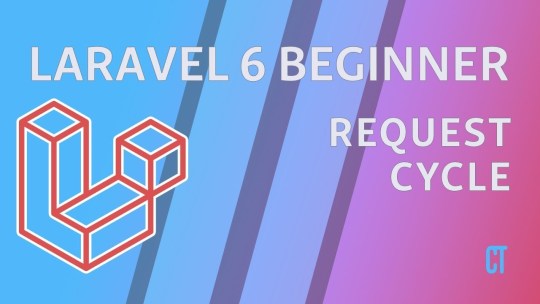
Laravel 6 Beginner – e13 – Request Cycle The request cycle is an important concept to any modern web application. In this episode, we are diving into what it means to use a helper function, the service ... source
#Laravel#laravel 6#laravel 6 crud#laravel 6 for beginners#laravel 6 new features#laravel 6 tutorial#laravel project#laravel request#laravel request lifecycle#laravel response#laravel service container#laravel services#PHP Laravel#request laravel#request life cycle in laravel
0 notes
Text
SMBs achieve remarkable TTM leveraging Laravel-PHP Framework

Laravel, the developer’s favorite PHP framework, got a few updates in 2021. The unanimous feedback is that now it is one of the best frameworks out there- thanks to a bunch of great features. This makes it a great choice for small businesses; who want to cut costs and deliver fast.
If you are an SMB owner- Laravel is a great option; because it makes development easy and fast- which can help you optimize time, to market for your brand.
How Does Laravel ensure it?
With its expressive and beautiful syntax, Laravel makes web development quicker, simpler, and more fun for developers by removing all the pain points associated with complicated PHP code.
So that developers may concentrate on developing the app’s business-related features, it simplifies some of the frequently performed activities, including routing, authentication, sessions, caching, and others.
Taylor Otwell developed the Laravel framework to make complex code simpler, quicker, and better for website developers.
How Does Laravel Help SMBs?
Many people wonder why Laravel has become so popular. If you’re wondering why, it’s because they want to build web applications with peace of mind, and Laravel offers much more than that. Its ease-of-use and quality have certainly contributed to its enormous popularity, but utilizing this popular framework also opens the door to several additional advantages.
When it comes to other PHP frameworks, Laravel has been well-researched, well-resolved, and well-tested. Note that the PHP Laravel framework includes built-in testing, ensuring that your web application is bug-free and secure.
As a result, SMBs web development experience with Laravel will be smooth and efficient with the following advantages:
1. Laravel Development Equals Quicker TTM
To make routine jobs more accessible, the PHP framework Laravel is modular. So, Laravel has several pre-built functions and structures that operate on the newest PHP concepts to create responsive web apps quickly. They have been developing these resources since Laravel’s inception in 2011 since it is an open-source framework.
Consequently, Laravel becomes more intuitive and faster to build web apps. As a result of Laravel’s framework, you don’t have to spend countless hours and weeks developing code. As a result, it speeds up the application delivery process while also being cost-effective.
2. Authentication and Seamless Authorization Options
In the words of Wikipedia, “Taylor Otwell developed Laravel as a more sophisticated alternative to the Codelgniter framework, which did not offer capabilities like built-in support for user authentication and authorization.”
To build an entire authentication system using the Laravel framework, including Login, Registration, and Password Reset, is very straightforward. All of this is accomplished by Laravel with a single command. You may arrange authorization logic and restrict access to resources using this tool.
3. Eliminating Technical Pain Points
‘Security Vulnerabilities’ is a part of the web development process. The OWASP Foundation has identified web application security vulnerabilities include SQL injection, cross-site request forgery, cross-site scripting, and others. These vulnerabilities get more expensive and take longer to resolve as you move through the software development lifecycle (SDLC). No other framework can safeguard your online application against the most severe security risks: SQL injection, cross-site request forgery, and XSS.
4. Ecosystem of Tools
● Laravel Passport: This package integrates the PHP League OAuth 2.0 Server package into Laravel. It includes all required database migrations, routes, controllers, and even optional Vue components, recommended for API developers.
● Laravel Scout: Another Laravel package for adding full text search to eloquent models. It syncs your search indexes using Model observers. While Algolia has its driver, the community has developed others such as Elastic search. This driver provides full-text search capabilities in PHP to your models.
● Laravel Envoy: It can send alerts to Slack and GitHub, Bitbucket, and self-hosted GitLab servers. Without downtime, it can deploy fresh versions of your projects to one or more servers.
● Laravel Spark: Laravel Spark is a fantastic place to start. Taylor created this scaffolding package to help you get started with authentication, teams, billing, invoices, subscriptions, and user impersonation. It comes with two-factor authentication and API authentication. A powerful installer and upgrader are included. It’s the only first-party Laravel package that costs money, yet it saves you time!
● Testing: Laravel Framework offers automated testing tools to ensure that your web app runs appropriately, making it easier to test an app. As a result, you may do expressive testing of your app by mimicking users’ fundamental behavior (for example, performing requests, evaluating outputs, and clicking forms).
There is a list of endless tools apart from the ones mentioned above.
5. The Ability to Automate the Task-Execution and Scheduling Process
When required, every web application requires a task scheduling system that allows it to automate certain activities. Emails to subscribers, app notification messages, or database cleaning to make web applications quicker are all examples of this.
Before, web developers had to create a Cron entry for each job they wanted to schedule to automate it. Using Laravel’s automated command scheduler, you can eliminate this hassle. A single Cron entry on your server is all that’s needed to perform the job.
This feature of the Laravel framework not only improves the performance and speed of your web project but also helps you save money on hosting.
6. Handling of Traffic
As the application’s popularity increases, it becomes more difficult to manage the traffic. A web application’s request volume increases as it receives more traffic. Hosting the online application will cost a lot of money, or the website server may cease working due to data loss.
Your worst nightmare might come true!
A message queue mechanism is included in the PHP Laravel Framework for load balancing purposes. To maintain a swift web server, the system helps handle traffic efficiently. This is one of the numerous advantages of Laravel.
Using Laravel’s queue service, you may access several queue back-ends from a single unified API in a single application. You may postpone the processing of a time-consuming operation, like sending an email. Queues dramatically speed up web requests to your application, allowing you to work more efficiently.
There are unified APIs for caching views in Laravel, whereas Symfony caches both source code and views. Symfony has a longer website loading time because of this. A typical Laravel website loads in 60 milliseconds, while a Symfony website takes around 250 milliseconds.
Why use Laravel for Business?
If you want to create an e-commerce website or a portal for your business, you will need to customize and add features to engage your consumers. Among the key reasons why Laravel is the best option for your website are:
Popularity:
Laravel has a worldwide community of devoted developers. They can help solve your issues by giving you typical answers and suggestions. Laravel also offers extensive documentation that enables you to self-learn and experiment with the framework’s many components.
Boosted Performance:
Every startup needs a boost in performance to gain popularity and clients. Laravel offers an application with unique features like multilingual support and improved security to enhance its potential and speed. Laravel also supports memcached and Redis caching technologies natively. With Laravel, you can speed up your applications. Its cache driver stores various cached items, allowing rapid program development.
Offers Better Cost Of Development:
Laravel is a PHP framework that is free and open source. You may create a website using Laravel for absolutely no money. For those who are not acquainted with coding, hiring a Laravel web development team will always be less expensive than working with another framework. Laravel is much simpler to use than competing frameworks or content management systems, which is why Laravel development is offered at a cheaper cost.
Conclusion
There is no question that Laravel does a great job of addressing the shortcomings of its predecessors. Fast, intuitive, cost-effective, and scalable online apps are just a few of the reasons why Laravel web development is growing in popularity.
Laravel, which has more than 60,000 stars on GitHub, also has a large community behind it. Using Laravel and its outstanding capabilities, you can build a solid online experience with the assistance of a reputable Web Development Company.
Like other businesses, if you too are looking to develop solutions in Laravel, Mindfire Solutions can be your partner of choice. We have deep expertise in Laravel PHP Development. With a team of highly skilled and certified software professionals, that have developed many custom solutions for our global clients over the years.
Get in Touch with Us
https://www.mindfiresolutions.com/
US East Coast: +1 248.686.1424
US West Coast: +1 415.226.6334
#php development company#php development#php development services#laravel development company#laravel development services#laravel development agency
0 notes
Text
Web Development and Types of Development
Web improvement
Under broad, web improvement incorporates all the exercises related with creating sites with intranet and web facilitating. Website composition, web content, customer side and worker side programming, and data security usage, among different assignments, are remembered for the web advancement measure. Site advancement mastery is worldwide in a developing business sector and very generously compensated as well, delivering developments an incredible profession opportunity. As you would not require a standard college degree to get qualified, it is among the most promptly accessible more significant compensation areas. With a continuous arrangement of an inside and expert web spaces, we can consider the To be as an assortment of an enormous assortment. Either at the hour of its development, the Web should turn into a stage to confer data to people in general. Be that as it may, presently it has trusted that a critical advance will turn into a spot whereby sites and web applications interface, communicate and draw in with clients around the world. Indeed, even now, notwithstanding web efficiency, organizations that run the web, dominating their current to world creation limit. The web has now become a matchless stage, even with kinds of items and administrations people can buy or trade that. This equivalent life cycle through web advancement plans sites that cycle the business just with clients or even the organization. Before starting now and into the foreseeable future and deciding the extension and determinations of the web application, the thoughts are refreshed and reconsidered. The organizations are known a stride ahead in characterizing the market details, beginning with the real formation of web improvement. Each web designer can make its own web improvement organization in Lahore in the event that he has a financial plan and can broaden his business by presenting his item on the lookout. Web advancement is a particular line of examination that gives a comprehension of the item for web improvement and all other related cycles. Web engineers couldn't deliver an ideal site on request immediately. They ought to be imparted and permitted to appreciate the HTTP solicitations' careful necessities. Software engineers make far reaching web applications and get familiar with the usefulness which interfaces including its web application and introduce it carefully for speedier business handling. These days each business needs a site for developing the business, and you can enlist an organization or independent for your site. A web advancement organization in Pakistan can assist with developing organizations for individuals.

Distinction between front end improvement and backend advancement
Front end improvement
HTML, CSS and JavaScript are utilized. From the drawing table, they take a thought and change it into training. The front-end engineer, who builds up a progression of ventures that predicament and structure the components, make them all look great or make intuitiveness, takes about what you see, and what do you use, for example, with the realistic side of the site, this equivalent drop-down menu and the content. Such projects are overseen by a program.
Sponsored end advancement
This is the place the information is gathered, and there would not be any fronted without such information. The organization sponsored includes the site's host worker, an application that oversees it, and afterward a data set to store the data. To guarantee that the worker, the product, just as the workers, run easily along, the sponsored engineer utilizes PC programming. This sort of improvement needs to break down whatever they has of an organization are and give viable options in contrast to coding. They pick various worker side dialects, for example, Ruby, PHP, Python, Laravel Framework, and do all these amazing things. A web improvement organization in Pakistan must have appropriate information on building up a site for customers. Backend improvement is fascinating, and it's brimming with rationale. Web Development Company in Lahore has master engineers which are helping the organization to develop.
Web Development Lifecycle
There is a web improvement life cycle that is utilizing for advancement and following this web improvement office can fabricate an appealing site.
Starting advance/Consultation
The underlying counsel expects to comprehend the significant level business necessities, the volume of web advancement, the execution timetable required, and the complete feasibility, web composition including the improvement of spending plan of the undertaking.
Particular of Projects
Both the client and the site advancement group, the organization prerequisites of the proposed framework becomes iterative cycle characterized and recorded as High-Level necessity examination. Here, the consideration is by all accounts on the applicable business rules and results. The framework execution, how well the prerequisites become really conveyed, is proposed for use. When acknowledged, this paper would shape the reason for the accompanying periods of the cycle of web creation.
Site Architecture
Site design alludes to the way, we fabricate a site to guarantee that our business needs are satisfied while providing our clients with a superior encounter. The two sites have an IA, however that additionally requires the whole look of the design of a site: convenience. Plan of Interactions. Improvement of a User Interface.
Web composition cycle
Expectations from that sort of cycle have a more grounded center generally around website composition of the framework, incorporate models or models of that equivalent showcases which contains the location, joined with auxiliary changes that will energize both the Client and programming engineers, creators, and cycle improvement groups to see unmistakably how the site will work from the client and overseer perspective.
Resemblance of substance/Material
Any content and graphical substance required for all the site must be created or gained by the Customer. Administrator usefulness which empowers the client to adjust the total substance of the site from either the gadget dispatch on either an ordinary premise should have been appropriately educated determined in the High-Level Specifications Specification, as expressed previously.
Testing and quality affirmation
Numerous parts of testing are taken out during the cycle, including gadget and volume testing-to ensure that specific segments cooperate inside the web application and in this manner can effectively fulfill that both introductory and foreseen potential prerequisites all the opportunity to customer approval Test and close down. There are numerous types of testing required all through that cycle that is past the span of such an execution, for example, cross-program tests and security testing-all of which lead to simply the conveyance top notch site or client care. Web improvement organizations in Lahore have a quality confirmation group to check the nature of sites. Web Development Company in Lahore web Development Company in Pakistan.
0 notes
Link
Nuxt.js provides an Axios module for easy integration with your application. Axios is a promise-based HTTP client that works in the browser and Node.js environment or, in simpler terms, it is a tool for making requests (e.g API calls) in client-side applications and Node.js environment. In this tutorial, we’re going to learn how to use the Axios module and how to make a request on the server-side using asyncData and fetch. These two methods make a request on the server-side but they have some differences which we’re also going to cover. Finally, we’ll learn how to perform authentication and secure pages/routes using the auth module and auth middleware. This article requires basic knowledge of Nuxtjs and Vuejs as we’ll be building on top of that. For those without experience with Vuejs, I recommend you start from their official documentation and the Nuxt official page before continuing with this article.
What Is The Nuxt.js Axios Module?
According to the official Documentation,
“It is a Secure and easy Axios integration with Nuxt.js.”
Here are some of its features:
Automatically set base URL for client-side & server-side.
Proxy request headers in SSR (Useful for auth).
Fetch Style requests.
Integrated with Nuxt.js Progressbar while making requests.
To use the axios module in your application, you will have to first install it by using either npm or yarn. YARN
yarn add @nuxtjs/axios
NPM
npm install @nuxtjs/axios
Add it into your nuxt.config.js file:
modules: [ '@nuxtjs/axios', ], axios: { // extra config e.g // BaseURL: 'https://link-to-API' }
The modules array accepts a list of Nuxt.js modules such as dotenv, auth and in this case, Axios. What we’ve done is to inform our application that we would be using the Axios module, which we reference using @nuxtjs/axios. This is then followed by the axios property which is an object of configurations like the baseURL for both client-side and server-side. Now, you can access Axios from anywhere in your application by calling this.$axios.method or this.$axios.$method. Where method can be get, post, or delete.
Making Your First Request Using Axios
For this tutorial, I’ve put together a simple application on Github. The repository contains two folders, start and finish, the start folder contains all you need to get right into the tutorial. The finish folder contains a completed version of what we would be building. After cloning the repo and opening the start folder, we would need to install all our packages in the package.json file so open your terminal and run the following command:
npm install
Once that is done, we can start our app using the npm run dev command. This is what you should see when you go to localhost:3000.
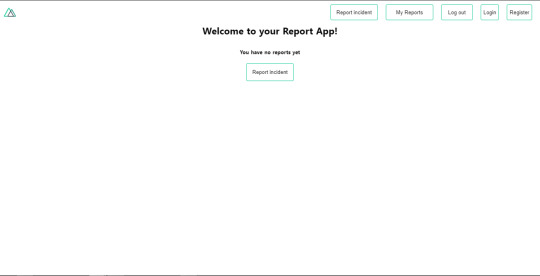
Our application’s landing page. (Large preview)
The next thing we have to do is to create a .env file in the root folder of our application and add our API URL to it. For this tutorial, we’ll be using a sample API built to collect reports from users.
API_URL=https://ireporter-endpoint.herokuapp.com/api/v2/
This way, we do not have to hard code our API into our app which is useful for working with two APIs (development and production). The next step would be to open our nuxt.config.js file and add the environmental variable to our axios config that we added above.
/* ** Axios module configuration */ axios: { // See https://github.com/nuxt-community/axios-module#options baseURL: process.env.API_URL, },
Here, we tell Nuxt.js to use this baseURL for both our client-side and server-side requests whenever we use this Axios module. Now, to fetch a list of reports, let us open the index.vue file and add the following method to the script section.
async getIncidents() { let res = await this.$store.dispatch("getIncidents"); this.incidents = res.data.data.incidents; }
What we have done is to create an async function that we call getIncidents() and we can tell what it does from the name — it fetches a list of incidents using the Vuex store action method this.$store.dispatch. We assign the response from this action to our incidents property so we can be able to make use of it in the component. We want to call the getIncidents() method whenever the component mounts. We can do that using the mounted hook.
mounted() { this.getIncidents() }
mounted() is a lifecycle hook that gets called when the component mounts. That will cause the call to the API to happen when the component mounts. Now, let us go into our index.js file in our store and create this action where we’ll be making our Axios request from.
export const actions = { async getIncidents() { let res = await this.$axios.get('/incidents') return res; } }
Here, we created the action called getIncidents which is an async function, then we await a response from the server and return this response. The response from this action is sent back to our getIncidents() method in our index.vue file. If we refresh our application, we should now be able to see a long list of incidents rendered on the page.
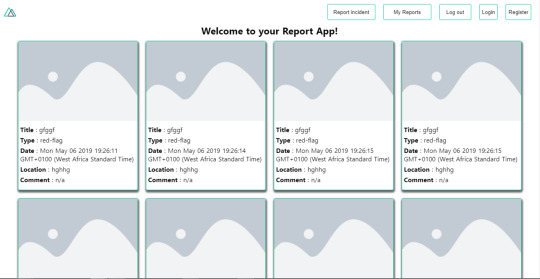
List of incidents on landing page. (Large preview)
We have made our first request using Axios but we won’t stop there, we are going to be trying out asyncData and fetch to see the differences between them and using Axios.
AsyncData
AsyncData fetches data on the server-side and it’s called before loading the page component. It does not have access to this because it is called before your page component data is created. this is only available after the created hook has been called so Nuxt.js automatically merges the returned data into the component’s data. Using asyncData is good for SEO because it fetches your site’s content on the server-side and also helps in loading content faster. Note that asyncData method can only be used in the pages folder of your application as it would not work in the components folder. This is because asyncData hook gets called before your component is created.
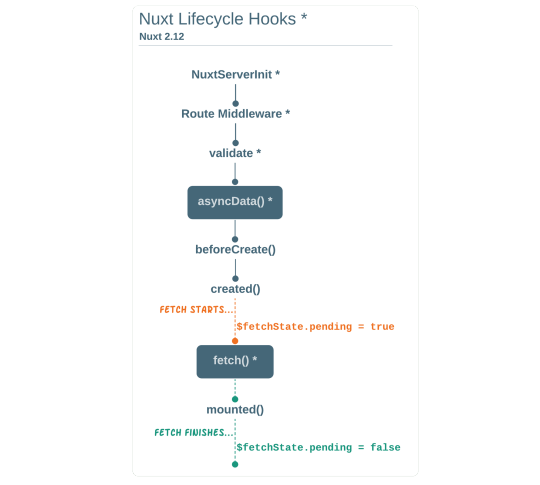
Image from Nuxt blog. (Large preview)
Let us add asyncData to our index.vue file and observe how fast our incidents data loads. Add the following code after our components property and let us get rid of our mounted hook.
async asyncData({ $axios }) { let { data } = await $axios.get("/incidents"); return { incidents: data.data.incidents }; }, // mounted() { // this.getIncidents(); // },
Here, the asyncData method accepts a property from the context $axios. We use this property to fetch the list of incidents and the value is then returned. This value is automatically injected into our component. Now, you can notice how fast your content loads if you refresh the page and at no time is there no incident to render.
Fetch
The Fetch method is also used to make requests on the server-side. It is called after the created hook in the life cycle which means it has access to the component’s data. Unlike the asyncData method, the fetch method can be used in all .vue files and be used with the Vuex store. This means that if you have the following in your data function.
data() { return { incidents: [], id: 5, gender: 'male' }; }
You can easily modify id or gender by calling this.id or this.gender.
Using Axios As A Plugin
During the process of development with Axios, you might find that you need extra configuration like creating instances and interceptors for your request so your application can work as intended and thankfully, we can do that by extending our Axios into a plugin. To extend axios, you have to create a plugin (e.g. axios.js) in your plugins folder.
export default function ({ $axios, store, redirect }) { $axios.onError(error => { if (error.response && error.response.status === 500) { redirect('/login') } }) $axios.interceptors.response.use( response => { if (response.status === 200) { if (response.request.responseURL && response.request.responseURL.includes('login')) { store.dispatch("setUser", response); } } return response } ) }
This is an example of a plugin I wrote for a Nuxt application. Here, your function takes in a context object of $axios, store and redirect which we would use in configuring the plugin. The first thing we do is to listen for an error with a status of 500 using $axios.onError and redirect the user to the login page. We also have an interceptor that intercepts every request response we make in our application checks if the status of the response we get is 200. If that is true we proceed and check that there is a response.request.responseURL and if it includes login. If this checks out to be true, we then send this response using our store’s dispatch method where it then mutated in our state. Add this plugin to your nuxt.config.js file:
plugins: [ '~/plugins/axios' ]
After doing this, your Axios plugin would intercept any request you make and check if you have defined a special case for it.
Introduction To The Auth Module
The auth module is used for performing authentication for your Nuxt application and can be accessed from anywhere in your application using $this.auth. It is also available in fetch, asyncData, middleware and NuxtInitServer from the context object as $auth. The context provides additional objects/params from Nuxt to Vue components and is available in special nuxt lifecycle areas like those mentioned above. To use the auth module in your application, you would have to install it using yarn or npm. YARN
yarn add @nuxtjs/auth
NPM
npm install @nuxtjs/auth
Add it to your nuxt.config.js file.
modules: [ '@nuxtjs/auth' ], auth: { // Options }
The auth property accepts a list of properties such as strategies and redirect. Here, strategies accepts your preferred authentication method which can be:
local For username/email and password-based flow.
facebook For using Facebook accounts as a means of authentication.
Github For authenticating users with Github accounts.
Google For authenticating users with Google accounts.
Auth0
Laravel Passport
The redirect property accepts an object of links for:
login Users would be redirected to this link if login is required.
logout Users would be redirected here if after logout current route is protected.
home Users would be redirected here after login.
Now, let us add the following to our nuxt.config.js file.
/* ** Auth module configuration */ auth: { redirect: { login: '/login', logout: '/', home: '/my-reports' }, strategies: { local: { endpoints: { login: { url: "/user/login", method: "post", propertyName: "data.token", }, logout: false, user: false, }, tokenType: '', tokenName: 'x-auth', autoFetchUser: false }, }, }
Please note that the auth method works best when there is a user endpoint provided in the option above. Inside the auth config object, we have a redirect option in which we set our login route to /login, logout route to / and home route to /my-reports which would all behave as expected. We also have a tokenType property which represents the Authorization type in the header of our Axios request. It is set to Bearer by default and can be changed to work with your API. For our API, there is no token type and this is why we’re going to leave it as an empty string. The tokenName represents the Authorization name (or the header property you want to attach your token to) inside your header in your Axios request. By default, it is set to Authorization but for our API, the Authorization name is x-auth. The autoFetchUser property is used to enable user fetch object using the user endpoint property after login. It is true by default but our API does not have a user endpoint so we have set that to false. For this tutorial, we would be using the local strategy. In our strategies, we have the local option with endpoints for login, user and logout but in our case, we would only use the *login* option because our demo API does not have a *logout* endpoint and our user object is being returned when *login* is successful. Note: The auth module does not have a register endpoint option so that means we’re going to register the traditional way and redirect the user to the login page where we will perform the authentication using this.$auth.loginWith. This is the method used in authenticating your users. It accepts a ‘strategy’ (e.g local) as a first argument and then an object to perform this authentication with. Take a look at the following example.
let data { email: '[email protected]', password: '123456' } this.$auth.loginWith('local', { data })
Using The Auth Module
Now that we have configured our auth module, we can proceed to our registration page. If you visit the /register page, you should see a registration form.
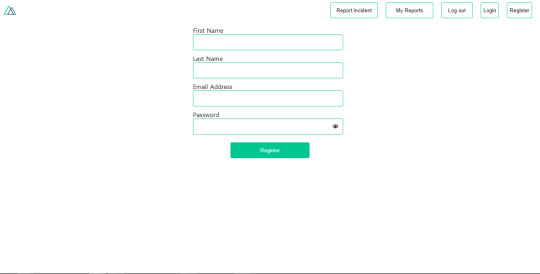
Register page. (Large preview)
Let us make this form functional by adding the following code:
methods: { async registerUser() { this.loading = true; let data = this.register; try { await this.$axios.post("/user/create", data); this.$router.push("/login"); this.loading = false; this.$notify({ group: "success", title: "Success!", text: "Account created successfully" }); } catch (error) { this.loading = false; this.$notify({ group: "error", title: "Error!", text: error.response ? error.response.data.error : "Sorry an error occured, check your internet" }); } } }
Here, we have an async function called registerUser which is tied to a click event in our template and makes an Axios request wrapped in a try/catch block to an endpoint /user/create. This redirects to the /login page and notifies the user of a successful registration. We also have a catch block that alerts the user of any error if the request is not successful. If the registration is successful, you would be redirected to the login page.
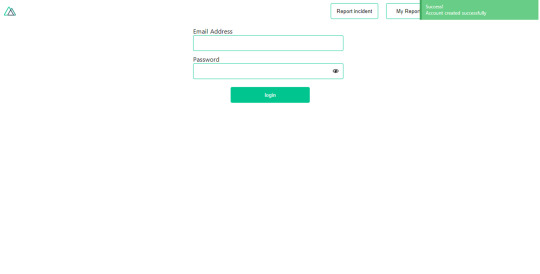
Login page with notification component. (Large preview)
Here, we’re going to make use of auth authentication method this.$auth.loginWith('local', loginData) after which we would use the this.$auth.setUser(userObj) to set the user in our auth instance. To get the login page working, let’s add the following code to our login.vue file.
methods: { async logIn() { let data = this.login; this.loading = true; try { let res = await this.$auth.loginWith("local", { data }); this.loading = false; let user = res.data.data.user; this.$auth.setUser(user); this.$notify({ group: "success", title: "Success!", text: "Welcome!" }); } catch (error) { this.loading = false; this.$notify({ group: "error", title: "Error!", text: error.response ? error.response.data.error : "Sorry an error occured, check your internet" }); } } }
We created an async function called logIn using the auth method this.$auth.loginWith('local, loginData). If this login attempt is successful, we then assign the user data to our auth instance using this.$auth.setUser(userInfo) and redirect the user to the /my-report page. You can now get user data using this.$auth.user or with Vuex using this.$store.state.auth.user but that’s not all. The auth instance contains some other properties which you can see if you log in or check your state using your Vue dev tools. If you log this.$store.state.auth to the console, you’ll see this:
{ "auth": { "user": { "id": "d7a5efdf-0c29-48aa-9255-be818301d602", "email": "[email protected]", "lastName": "Xo", "firstName": "Tm", "othernames": null, "isAdmin": false, "phoneNumber": null, "username": null }, "loggedIn": true, "strategy": "local", "busy": false } }
The auth instance contains a loggedIn property that is useful in switching between authenticated links in the nav/header section of your application. It also contains a strategy method that states the type of strategy the instance is running (e.g local). Now, we will make use of this loggedIn property to arrange our nav links. Update your navBar component to the following:
<template> <header class="header"> <div class="logo"> <nuxt-link to="/"> <Logo /> </nuxt-link> </div> <nav class="nav"> <div class="nav__user" v-if="auth.loggedIn"> <p></p> <button class="nav__link nav__link--long"> <nuxt-link to="/report-incident">Report incident</nuxt-link> </button> <button class="nav__link nav__link--long"> <nuxt-link to="/my-reports">My Reports</nuxt-link> </button> <button class="nav__link" @click.prevent="logOut">Log out</button> </div> <button class="nav__link" v-if="!auth.loggedIn"> <nuxt-link to="/login">Login</nuxt-link> </button> <button class="nav__link" v-if="!auth.loggedIn"> <nuxt-link to="/register">Register</nuxt-link> </button> </nav> </header> </template> <script> import { mapState } from "vuex"; import Logo from "@/components/Logo"; export default { name: "nav-bar", data() { return {}; }, computed: { ...mapState(["auth"]) }, methods: { logOut() { this.$store.dispatch("logOut"); this.$router.push("/login"); } }, components: { Logo } }; </script> <style></style>
In our template section, we have several links to different parts of the application in which we are now using auth.loggedIn to display the appropriate links depending on the authentication status. We have a logout button that has a click event with a logOut() function attached to it. We also display the user’s email gotten from the auth property which is accessed from our Vuex store using the mapState method which maps our state auth to the computed property of the nav component. We also have a logout method that calls our Vuex action logOut and redirects the user to the login page. Now, let us go ahead and update our store to have a logOut action.
export const actions = { // .... logOut() { this.$auth.logout(); } }
The logOut action calls the auth logout method which clears user data, deletes tokens from localStorage and sets loggedIn to false. Routes like /my-reports and report-incident should not be visible to guests but at this point in our app, that is not the case. Nuxt does not have a navigation guard that can protect your routes, but it has is the auth middleware. It gives you the freedom to create your own middleware so you can configure it to work the way you want. It can be set in two ways:
Per route.
Globally for the whole app in your nuxt.config.js file.
router: { middleware: ['auth'] }
This auth middleware works with your auth instance so you do not need to create an auth.js file in your middleware folder. Let us now add this middleware to our my-reports.vue and report-incident.vue files. Add the following lines of code to the script section of each file.
middleware: 'auth'
Now, our application would check if the user trying to access these routes has an auth.loggedIn value of true. It’ll redirect them to the login page using our redirect option in our auth config file — if you’re not logged in and you try to visit either /my-report or report-incident, you would be redirected to /login. If you go to /report-incidents, this is what you should see.
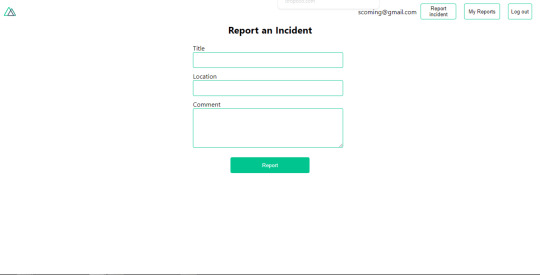
Report incident page. (Large preview)
This page is for adding incidents but that right now the form does not send incident to our server because we are not making the call to the server when the user attempts to submit the form. To solve this, we will add a reportIncident method which will be called when the user clicks on Report. We’ll have this in the script section of the component. This method will send the form data to the server. Update your report-incident.vue file with the following:
<template> <section class="report"> <h1 class="report__heading">Report an Incident</h1> <form class="report__form"> <div class="input__container"> <label for="title" class="input__label">Title</label> <input type="text" name="title" id="title" v-model="incident.title" class="input__field" required /> </div> <div class="input__container"> <label for="location" class="input__label">Location</label> <input type="text" name="location" id="location" v-model="incident.location" required class="input__field" /> </div> <div class="input__container"> <label for="comment" class="input__label">Comment</label> <textarea name="comment" id="comment" v-model="incident.comment" class="input__area" cols="30" rows="10" required ></textarea> </div> <input type="submit" value="Report" class="input__button" @click.prevent="reportIncident" /> <p class="loading__indicator" v-if="loading">Please wait....</p> </form> </section> </template> <script> export default { name: "report-incident", middleware: "auth", data() { return { loading: false, incident: { type: "red-flag", title: "", location: "", comment: "" } }; }, methods: { async reportIncident() { let data = this.incident; let formData = new FormData(); formData.append("title", data.title); formData.append("type", data.type); formData.append("location", data.location); formData.append("comment", data.comment); this.loading = true; try { let res = await this.$store.dispatch("reportIncident", formData); this.$notify({ group: "success", title: "Success", text: "Incident reported successfully!" }); this.loading = false; this.$router.push("/my-reports"); } catch (error) { this.loading = false; this.$notify({ group: "error", title: "Error!", text: error.response ? error.response.data.error : "Sorry an error occured, check your internet" }); } } } }; </script> <style> </style>
Here, we have a form with input fields for title, location, and comment with two-way data binding using v-model. We also have a submit button with a click event. In the script section, we have a reportIncident method that collects all the information provided in the form and is sent to our server using FormData because the API is designed to also accept images and videos. This formData is attached to a Vuex action using the dispatch method, if the request is successful, you get redirected to /my-reports with a notification informing you that this request was successful otherwise, you would be notified of an error with the error message. At this point, we don’t have reportIncident action in our store yet so in your browser console, you would see an error if you try to click submit on this page.

Vuex error message. (Large preview)
To fix this, add the reportIncident action your index.js file.
export const actions = { // ... async reportIncident({}, data) { let res = await this.$axios.post('/incident/create', data) return res; } }
Here, we have a reportIncident function that takes in an empty context object and the data we’re sending from our form. This data is then attached to a post request that creates an incident and returns back to our report-incident.vue file. At this point, you should be able to add a report using the form after which you would be redirected to /my-reports page.
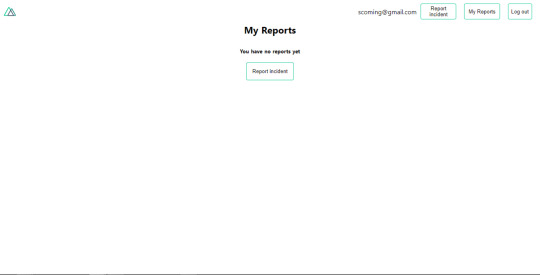
My reports page empty. (Large preview)
This page should display a list of incidents created by the user but right now it only shows what we see above, let’s go ahead to fix that. We’re going to be using the fetch method we learned about to get this list. Update your my-reports.vue file with the following:
<script> import incidentCard from "@/components/incidentCard.vue"; export default { middleware: "auth", name: "my-reports", data() { return { incidents: [] }; }, components: { incidentCard }, async fetch() { let { data } = await this.$axios.get("/user/incidents"); this.incidents = data.data; } }; </script>
Here, we use fetch method to get user-specific incidents and assign the response to our incidents array. If you refresh your page after adding an incident, you should see something like this.
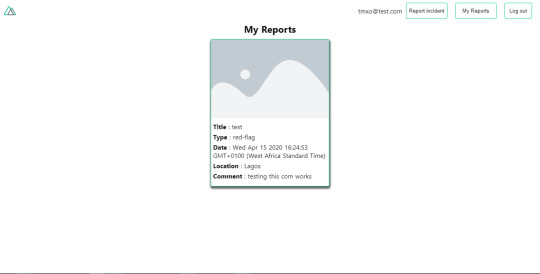
My Reports page with a report. (Large preview)
At this point, we would notice a difference in how fetch method and asyncData loads our data.
Conclusion
So far, we have learned about the Axios module and all of its features. We have also learned more about asyncData, and how we can fetch both of them together despite their differences. We’ve also learned how to perform authentication in our application using the auth module and how to use the auth middleware to protect our routes. Here are some useful resources that talk more about all we’ve covered.
Getting started with meta tags in Nuxjs.
Using the dotenv module in Nuxt.
Using Fetch in your Nuxt app.
Getting started with asyncData.
0 notes
Text
How iOS App Development Benefits Your Business to Grow Globally?

Apple has a convention; each Januarythey disclose data to prove how well the App Store and iOS apps performed annually. This year's statements are an indicator of the staggering prevalence and penetration of iPhone apps. Take a look...
There are approximately 2.2M apps in the App Store. Normally, around 2,540 programs are published on the App Store every day.
The App Store revenue listed in Q2 2019 is about $25.5B, which can be nearly 80 percent more than that which Google
These and the plethora of additional App Store data gives the same message: Apple's business is booming and iPhone apps are a people's favorite.
Businesses seeking to capture market share in programs would be making a lucrative deal by investing in iPhone software development for businesses. Apple's closest rival, Android, also has great numbers to show. But iPhone's penetration and reach are unsurpassed. In reality, according to BGR, there's a consumer defection fad among Android users. These benefits included iPhone being one of the oldest smartphones. How the iPhone was able to keep its iron grip users by offering consistent functionality and innovation.
IPhone apps are known to be high quality and revenue generating. Both startups and recognized brands are investing in iPhone app development to meet their business requirements and create a quick return on their investment.
Let us take a examine a few of the perks of investing in iPhone program development services.
Benefits of iOS App Development Better App Revenue
IPhone apps have a greater ROI than Android apps. A fact that adds on to the benefits of iOS App development, to a huge extent.
To get the best of their revenue generation opportunities from the iOS program development process, keeping an eye on the mistakes, advice, along with other relevant information are a major benefit. Consult with our mobile app development guide formulated by the adventures of our experts to get an Notion of what worth knowing
1. Safety of Enterprise Data
Intrusion into a business's sensitive enterprise information lodged in apps is a large risk with Android programs. On the flip side, if you compare the iPhone vs Android predicated on on safety, iPhone apps, protect firmware and software via rigorous safety measures such as:
Integrated data handling systems.
Measures to prevent duplication of data.
Steps against loss of safety as a result of data encryption.
IPhone users are cushioned against malware and hacking and this counts under the benefits of iPhone over Android.
3. High-Quality Standards
IPhone app development for business remains incomplete until the apps are constructed to pass the high-quality criteria of Apple's Play Store until they're made available to the marketplace. When a user registers an iPhone app, he can be certain of perfect performance and amazing experience.
Android app developers dig to the open-source libraries and follow a non-standardized development strategy. This leads to apps offering fantastic consumer experience on some apparatus and less-than-satisfactory experience on others. IPhone users are welcomed with the exact same scintillating UX across all devices.
Plus, since the evolution of Android apps is slower, price of Android program development is a lot higher than that of iPhone development. Firms are forced to outsource android projects to the lowest bidder who will deliver substandard products. This is why Apple play store personally vets each and every app before publishing and releasing it to the market.
4. Programs for many business needs
Brands of scales and sizes have recognized the benefits of having mobile programs for company. Consumers expect mobility and responsiveness from any company they cope with -- something which comes connected with the process of iPhone program development for company. Mobile applications are an ideal gateway to reach customers on the go and stay connected together every moment.
IPhone programs, custom-built or off-the-shelf, are available to suit all business needs. Despite the fact that the price of iPhone app growth is marginally higher than other options available, iPhone apps are found to be more lucrative for businesses due to their guaranteed market reach and better-paying clients.
5. Established Customer Base
The established user base is the one Apple USP that's also one of the prime advantages of iOS application development. In fact, it's stated that after a smartphone user experiences iOS, they will never be satisfied by any other OS. Android programs have to battle stiff competition since there are too many apps crowding this section.
6. Exemplary User Experience
IPhone apps delight users with superior user experience supported fully by the inherent capacities of Apple's iOS. Complete cohesion involving software and hardware levels to a fantastic performance of iPhone applications. To top it all, comprehensive customer support and maintenance contributes to improved satisfaction among users through an program's lifecycle. Something which again adds to the advantages of preferring iOS program development. Tech-Ready Audience
IPhone users are found to be tech-savvy and receptive towards innovation. This gifts businesses with numerous chances to manage challenging applications that can create disruption in markets. Firms that opt for iPhone app growth can become market leaders and stride ahead of competitors. Low Fragmentation and Simplicity of Testing
Apple typically develops just 1 updation on its existing OS each year. Also, the number of Apple devices are lower than Android-based ones. Hence, Android programs must be tested satisfactorily to operate well on all the versions of Android OS. IPhone programs just have to fulfill testing criteria of the widespread iOS versions. This substantially reduces testing time and ensures a fast time to market for iOS programs.
Android market is severely fragmented. Only 10.4% of Android users are employing the most recent OS version and also the vast majority of consumers are still using three-year-old versions. This presents a grave problem to businesses. They have to spend in creating apps which are suited to all popular variants of their Android OS. Obviously, all this translates to a greater price of app development.
Apple's marketplace is a consolidated one. Nearly 89.8% iPhone users are utilizing iOS 12, the latest version of OS. This is a good chunk of a user base and practically viable for any business to reach. Something that triggers them to turn towards a reputed iOS program development firm. Besides, very low fragmentation in iOS also contributes to more scalable apps. Along with the recently introduced features keep on upscaling existing apps.
7. High Market Penetration
For a business to spread its wings and then penetrate these markets, iOS programs can be a winning proposition. Apple's heritage and quality are well-established sufficient to guarantee decent achievement for your iOS apps. Google's heritage in app domain is zilch. Android programs have to struggle with countless new apps released to the market. Even after investing heftly in top-rated Android app development services, it is highly uncertain if the app will make sufficient revenue to recover initial investment, let alone make any gain.
8. Less Development Time
When it comes to how much time does it take to construct a program, iOS programs take nearly 28 percent less time compared to Android apps of the very same specifications. This is because Android apps have to be tested across a minimum of 20 apparatus with varying resolutions, screen dimensions, and OS versions. Obviously, Android app's development cycle is longer and you have to pay more for developing Android apps.
IPhone programs guarantee market visibility, profitability, and client loyalty. This added to the reduced iPhone app development services time, very low manufacturing costs and affordable maintenance, creates the mobile program development process quite helpful for the businesses. Firms are able to capitalise on Apple's legacy to secure a dominant place in the aggressive app marketplace. What more can you request!
Author Bio:
Salman Ahmed is a Business Manager at Magneto IT Solutions – an Mobile Application development company in Bahrain offers quality I phone Application Development, Magento development,android app development, magento migration, mobile app development services. The company has experienced Laravel developers for hire at very affordable price. He is a firm believer in teamwork; for him, it is not just an idea, but also the team’s buy-in into the idea, that makes a campaign successful! He’s enthusiastic about all things marketing.
0 notes
Text
Laravel 5.6 masterclass - very comprehensive - 125 videos - Udemy
Laravel 5.6 masterclass – very comprehensive – 125 videos – Udemy
Laravel 5.6 masterclass – very comprehensive – 125 videos – Udemy
This tutorial touches all aspects of laravel comprehensively and extensively. Best tutorial on this topic.
What Will I Learn?
Basics of Laravel
Learn Laravel Installation
Laravel Environment Setup and Configuration
Laravel Directory Structure
Understand Request Lifecycle in Laravel
Understand Service Providers, Facades and…
View On WordPress
0 notes
Text
Building a Vue SPA with Laravel Part 3
News / February 16, 2018
Building a Vue SPA with Laravel Part 3
We will continue building our Vue SPA with Laravel by showing you how to load asynchronous data before the vue-router enters a route.
We left off in Building a Vue SPA With Laravel Part 2 finishing a UsersIndex Vue component which loads users from an API asynchronously. We skimped on building a real API backed by the database and opted for fake data in the API response from Laravel’s factory() method.
If you haven’t read Part 1 and Part 2 of building a Vue SPA with Laravel, I suggest you start with those posts first and then come back. I’ll be waiting for you!
In this tutorial we are also going to swap out our fake /users endpoint with a real one powered by a database. I prefer to use MySQL, but you can use whatever database driver you want!
Our UsersIndex.vue router component is loading the data from the API during the created() lifecycle hook. Here’s what our fetchData() method looks like at the conclusion of Part 2:
created() { this.fetchData(); }, methods: { fetchData() { this.error = this.users = null; this.loading = true; axios .get('/api/users') .then(response => { this.loading = false; this.users = response.data; }).catch(error => { this.loading = false; this.error = error.response.data.message || error.message; }); } }
I promised that I’d show you how to retrieve data from the API before navigating to a component, but before we do that we need to swap our API out for some real data.
Creating a Real Users Endpoint
We are going to create a UsersController from which we return JSON data using Laravel’s new API resources introduced in Laravel 5.5.
Before we create the controller and API resource, let’s first set up a database and seeder to provide some test data for our SPA.
The User Database Seeder
We can create a new users seeder with the make:seeder command:
php artisan make:seeder UsersTableSeeder
The UsersTableSeeder is pretty simple right now—we just create 50 users with a model factory:
<?php use Illuminate\Database\Seeder; class UsersTableSeeder extends Seeder { public function run() { factory(App\User::class, 50)->create(); } }
Next, let’s add the UsersTableSeeder to our database/seeds/DatabaseSeeder.php file:
<?php use Illuminate\Database\Seeder; class DatabaseSeeder extends Seeder { /** * Run the database seeds. * * @return void */ public function run() { $this->call([ UsersTableSeeder::class, ]); } }
We can’t apply this seeder without first creating and configuring a database.
Configuring a Database
It’s time to hook our Vue SPA Laravel application up to a real database. You can use SQLite with a GUI like TablePlus or MySQL. If you’re new to Laravel, you can go through the extensive documentation on getting started with a database.
If you have a local MySQL instance running on your machine, you can create a new database rather quickly from the command line with the following (assuming you don’t have a password for local development):
mysql -u root -e"create database vue_spa;" # or you could prompt for the password with the -p flag mysql -u root -e"create database vue_spa;" -p
Once you have the database, in the .env file configure the DB_DATABASE=vue_spa. If you get stuck, follow the documentation which should make it easy to get your database working.
Once you have the database connection configured, you can migrate your database tables and add seed data. Laravel ships with a Users table migration that we are using to seed data:
# Ensure the database seeders get auto-loaded composer dump-autoload php artisan migrate:fresh --seed
You can also use the separate artisan db:seed command if you wish! That’s it; you should have a database with 50 users that we can query and return via the API.
The Users Controller
If you recall from Part 2, the fake /users endpoint found in the routes/api.php file looks like this:
Route::get('/users', function () { return factory('App\User', 10)->make(); });
Let’s create a controller class, which also gives us the added benefit of being able to use php artisan route:cache in production, which is not possible with closures. We’ll create both the controller and a User API resource class from the command line:
php artisan make:controller Api/UsersController php artisan make:resource UserResource
The first command is adding the User controller in an Api folder at app/Http/Controllers/Api, and the second command adds UserResource to the app/Http/Resources folder.
Here’s the new routes/api.php code for our controller and Api namespace:
Route::namespace('Api')->group(function () { Route::get('/users', 'UsersController@index'); });
The controller is pretty straightforward; we are returning an Eloquent API resource with pagination:
<?php namespace App\Http\Controllers\Api; use App\User; use Illuminate\Http\Request; use App\Http\Controllers\Controller; use App\Http\Resources\UserResource; class UsersController extends Controller { public function index() { return UserResource::collection(User::paginate(10)); } }
Here’s an example of what the JSON response will look like once we wire up the UserResource with API format:
{ "data":[ { "name":"Francis Marquardt", "email":"[email protected]" }, { "name":"Dr. Florine Beatty", "email":"[email protected]" }, ... ], "links":{ "first":"http:\/\/vue-router.test\/api\/users?page=1", "last":"http:\/\/vue-router.test\/api\/users?page=5", "prev":null, "next":"http:\/\/vue-router.test\/api\/users?page=2" }, "meta":{ "current_page":1, "from":1, "last_page":5, "path":"http:\/\/vue-router.test\/api\/users", "per_page":10, "to":10, "total":50 } }
It’s fantastic that Laravel provides us with the pagination data and adds the users to a data key automatically!
Here’s the UserResource class:
<?php namespace App\Http\Resources; use Illuminate\Http\Resources\Json\Resource; class UserResource extends Resource { /** * Transform the resource into an array. * * @param \Illuminate\Http\Request $request * @return array */ public function toArray($request) { return [ 'name' => $this->name, 'email' => $this->email, ]; } }
The UserResource transforms each User model in the collection to an array and provides the UserResource::collection() method to transform a collection of users into a JSON format.
At this point, you should have a working /api/users endpoint that we can use with our SPA, but if you are following along, you will notice that our new response format breaks the component.
Fixing the UsersIndex Component
We can quickly get our UsersIndex.vue Component working again by adjusting the then() call to reference the data key where our user data now lives. It might look at little funky at first, but response.data is the response object, so the user data can be set like the following:
this.users = response.data.data;
Here’s the adjusted fetchData() method that works with our new API:
fetchData() { this.error = this.users = null; this.loading = true; axios .get('/api/users') .then(response => { this.loading = false; this.users = response.data.data; }).catch(error => { this.loading = false; this.error = error.response.data.message || error.message; }); }
Fetching Data Before Navigation
Our component is working with our new API, and it’s an excellent time to demonstrate how you might fetch users before navigation to the component occurs.
With this approach, we fetch the data and then navigate to the new route. We can accomplish this by using the beforeRouteEnter guard on the incoming component. An example from the vue-router documentation looks like this:
beforeRouteEnter (to, from, next) { getPost(to.params.id, (err, post) => { next(vm => vm.setData(err, post)) }) },
Check the documentation for the complete example, but suffice it to say that we will asynchronously get the user data, once complete, and only after completion, we trigger next() and set the data on our component (the vm variable).
Here’s what a getUsers function might look like to asynchronously get users from the API and then trigger a callback into the component:
const getUsers = (page, callback) => { const params = { page }; axios .get('/api/users', { params }) .then(response => { callback(null, response.data); }).catch(error => { callback(error, error.response.data); }); };
Note that the method doesn’t return a Promise, but instead triggers a callback on completion or failure. The callback passes to arguments, an error, and the response from the API call.
Our getUsers() method accepts a page variable which ends up in the request as a query string param. If it’s null (no page passed in the route), then the API will automatically assume page=1.
The last thing I’ll point out is the const params value. It will effectively look like this:
{ params: { page: 1 } }
And here’s how our beforeRouteEnter guard uses the getUsers function to get async data and then set it on the component while calling next():
beforeRouteEnter (to, from, next) { const params = { page: to.query.page }; getUsers(to.query.page, (err, data) => { next(vm => vm.setData(err, data)); }); },
This piece is the callback argument in the getUses() call after the data is returned from the API:
(err, data) => { next(vm => vm.setData(err, data)); }
Which is then called like this in getUsers() on a successful response from the API:
callback(null, response.data);
The beforeRouteUpdate
When the component is in a rendered state already, and the route changes, the beforeRouteUpdate gets called, and Vue reuses the component in the new route. For example, when our users navigate from /users?page=2 to /users?page=3.
The beforeRouteUpdate call is similar to beforeRouteEnter. However, the former has access to this on the component, so the style is slightly different:
// when route changes and this component is already rendered, // the logic will be slightly different. beforeRouteUpdate (to, from, next) { this.users = this.links = this.meta = null getUsers(to.query.page, (err, data) => { this.setData(err, data); next(); }); },
Since the component is in a rendered state, we need to reset a few data properties before getting the next set of users from the API. We have access to the component. Therefore, we can call this.setData() (which I have yet to show you) first, and then call next() without a callback.
Finally, here’s the setData method on the UsersIndex component:
setData(err, { data: users, links, meta }) { if (err) { this.error = err.toString(); } else { this.users = users; this.links = links; this.meta = meta; } },
The setData() method uses object destructuring to get the data, links and meta keys coming from the API response. We use the data: users to assign data to the new variable name users for clarity.
Tying the UsersIndex All Together
I’ve shown you pieces of the UsersIndex component, and we are ready to tie it all together, and sprinkle on some very basic pagination. This tutorial isn’t showing you how to build pagination, so you can find (or create) fancy pagination of your own!
Pagination is an excellent way to show you how to navigate around an SPA with vue-router programmatically.
Here’s the full component with our new hooks and methods to get async data using router hooks:
<template> <div class="users"> <div v-if="error" class="error"> <p></p> </div> <ul v-if="users"> <li v-for="{ id, name, email } in users"> <strong>Name:</strong> , <strong>Email:</strong> </li> </ul> <div class="pagination"> <button :disabled="! prevPage" @click.prevent="goToPrev">Previous</button> <button :disabled="! nextPage" @click.prevent="goToNext">Next</button> </div> </div> </template> <script> import axios from 'axios'; const getUsers = (page, callback) => { const params = { page }; axios .get('/api/users', { params }) .then(response => { callback(null, response.data); }).catch(error => { callback(error, error.response.data); }); }; export default { data() { return { users: null, meta: null, links: { first: null, last: null, next: null, prev: null, }, error: null, }; }, computed: { nextPage() { if (! this.meta || this.meta.current_page === this.meta.last_page) { return; } return this.meta.current_page + 1; }, prevPage() { if (! this.meta || this.meta.current_page === 1) { return; } return this.meta.current_page - 1; }, paginatonCount() { if (! this.meta) { return; } const { current_page, last_page } = this.meta; return `${current_page} of ${last_page}`; }, }, beforeRouteEnter (to, from, next) { getUsers(to.query.page, (err, data) => { next(vm => vm.setData(err, data)); }); }, // when route changes and this component is already rendered, // the logic will be slightly different. beforeRouteUpdate (to, from, next) { this.users = this.links = this.meta = null getUsers(to.query.page, (err, data) => { this.setData(err, data); next(); }); }, methods: { goToNext() { this.$router.push({ query: { page: this.nextPage, }, }); }, goToPrev() { this.$router.push({ name: 'users.index', query: { page: this.prevPage, } }); }, setData(err, { data: users, links, meta }) { if (err) { this.error = err.toString(); } else { this.users = users; this.links = links; this.meta = meta; } }, } } </script>
If it’s easier to digest, here’s the UsersIndex.vue as a GitHub Gist.
There are quite a few new things here, so I’ll point out some of the more important points. The goToNext() and goToPrev() methods demonstrate how you navigate with vue-router using this.$router.push:
this.$router.push({ query: { page: `${this.nextPage}`, }, });
We are pushing a new page to the query string which triggers beforeRouteUpdate. I also want to point out that I’m showing you a <button> element for the previous and next actions, primarily to demonstrate programmatically navigating with vue-router, and you would likely use <router-link /> to automatically navigate between paginated routes.
I have introduced three computed properties (nextPage, prevPage, and paginatonCount) to determine the next and previous page numbers, and a paginatonCount to show a visual count of the current page number and the total page count.
The next and previous buttons use the computed properties to determine if they should be disabled, and the “goTo” methods use these computed properties to push the page query string param to the next or previous page. The buttons are disabled when a next or previous page is null at the boundaries of the first and last pages.
There’s probably a bit of redundancy in the code, but this component illustrates using vue-router for fetching data before entering a route!
Don’t forget to make sure you build the latest version of your JavaScript by running Laravel Mix:
# NPM npm run dev # Watch to update automatically while developing npm run watch # Yarn yarn dev # Watch to update automatically while developing yarn watch
Finally, here’s what our SPA looks like after we update the complete UsersIndex.vue component:
What’s Next
We now have a working API with real data from a database, and a simple paginated component which uses Laravel’s API model resources on the backend for simple pagination links and wrapping the data in a data key.
Next, we will work on creating, editing, and deleting users. A /users resource would be locked down in a real application, but for now, we are just building CRUD functionality to learn how to work with vue-router to navigate and pull in data asynchronously.
We could also work on abstracting the axios client code out of the component, but for now, it’s simple, so we’ll leave it in the component until Part 4. Once we add additional API features, we’ll want to create a dedicated module for our HTTP client.
via Laravel News http://ift.tt/2BxHnhd
0 notes
Text
Back-end Developer job at Swoop Ph Philippines
Swoop, Inc. is a homegrown tech startup that aims to build and operate the Philippines’ biggest disruptor in the real estate industry. Our first mobile app, Swoop PH is a full-service real estate app focused on the residential reseller market. Launched December 2016, it’s dubbed the “Tinder for real estate,” and goes beyond listing and matching services, providing prompt solutions for real estate concerns.
We are looking for an experienced Back-end Developer to join our team. You will be responsible for the server side of our web applications, managing the interchange of data between the server and the users for Laravel, WordPress and SugarCRM. Your primary focus will be development of all server-side logic, definition and maintenance of the central database, and ensuring high performance and responsiveness to requests from the front-end. You will also be responsible for integrating the front-end elements built by your coworkers into the application. A basic understanding of front-end technologies is therefore necessary as well.
Responsibilities
Participate in the entire application lifecycle, focusing on coding and debugging
Write clean code to develop functional web applications
Troubleshoot and debug applications
Perform UI tests to optimize performance
Manage cutting-edge technologies to improve legacy applications
Collaborate with Front-end developers to integrate user-facing elements with server side logic
Gather and address technical and design requirements
Provide training and support to internal teams
Build reusable code and libraries for future use
Liaise with developers, designers and system administrators to identify new features
Follow emerging technologies
Proven work experience or extreme interest (with projects/portfolio) as a Back-end developer
We prefer 2+ years experience working professionally though we are willing to train people who are passionate and dedicated to their craft.
In-depth understanding of the entire web development process (design, development and deployment)
Hands on experience with programming languages like Java, Ruby, PHP and Python
Proficient understanding of code versioning tools, such as Git
Working knowledge of CMS framework
Familiarity with front-end languages (e.g. HTML, JavaScript and CSS)
Good understanding of server-side CSS preprocessors, such as LESS and SASS
Understanding accessibility and security compliance
Excellent analytical and time management skills
Teamwork skills with a problem-solving attitude
Communication skills (written, verbal) in English – meaning you won’t freeze while talking to fellow non-Filipino developers
StartUp Jobs Asia - Startup Jobs in Singapore , Malaysia , HongKong ,Thailand from http://www.startupjobs.asia/job/26900-back-end-developer-it-job-at-swoop-ph-philippines Startup Jobs Asia https://startupjobsasia.tumblr.com/post/159285884304
0 notes
Text
Back-end Developer job at Swoop Ph Philippines
Swoop, Inc. is a homegrown tech startup that aims to build and operate the Philippines' biggest disruptor in the real estate industry. Our first mobile app, Swoop PH is a full-service real estate app focused on the residential reseller market. Launched December 2016, it’s dubbed the “Tinder for real estate,” and goes beyond listing and matching services, providing prompt solutions for real estate concerns.
We are looking for an experienced Back-end Developer to join our team. You will be responsible for the server side of our web applications, managing the interchange of data between the server and the users for Laravel, WordPress and SugarCRM. Your primary focus will be development of all server-side logic, definition and maintenance of the central database, and ensuring high performance and responsiveness to requests from the front-end. You will also be responsible for integrating the front-end elements built by your coworkers into the application. A basic understanding of front-end technologies is therefore necessary as well.
Responsibilities
Participate in the entire application lifecycle, focusing on coding and debugging
Write clean code to develop functional web applications
Troubleshoot and debug applications
Perform UI tests to optimize performance
Manage cutting-edge technologies to improve legacy applications
Collaborate with Front-end developers to integrate user-facing elements with server side logic
Gather and address technical and design requirements
Provide training and support to internal teams
Build reusable code and libraries for future use
Liaise with developers, designers and system administrators to identify new features
Follow emerging technologies
Proven work experience or extreme interest (with projects/portfolio) as a Back-end developer
We prefer 2+ years experience working professionally though we are willing to train people who are passionate and dedicated to their craft.
In-depth understanding of the entire web development process (design, development and deployment)
Hands on experience with programming languages like Java, Ruby, PHP and Python
Proficient understanding of code versioning tools, such as Git
Working knowledge of CMS framework
Familiarity with front-end languages (e.g. HTML, JavaScript and CSS)
Good understanding of server-side CSS preprocessors, such as LESS and SASS
Understanding accessibility and security compliance
Excellent analytical and time management skills
Teamwork skills with a problem-solving attitude
Communication skills (written, verbal) in English — meaning you won’t freeze while talking to fellow non-Filipino developers
From http://www.startupjobs.asia/job/26900-back-end-developer-it-job-at-swoop-ph-philippines
from https://startupjobsasiablog.wordpress.com/2017/04/07/back-end-developer-job-at-swoop-ph-philippines/
0 notes